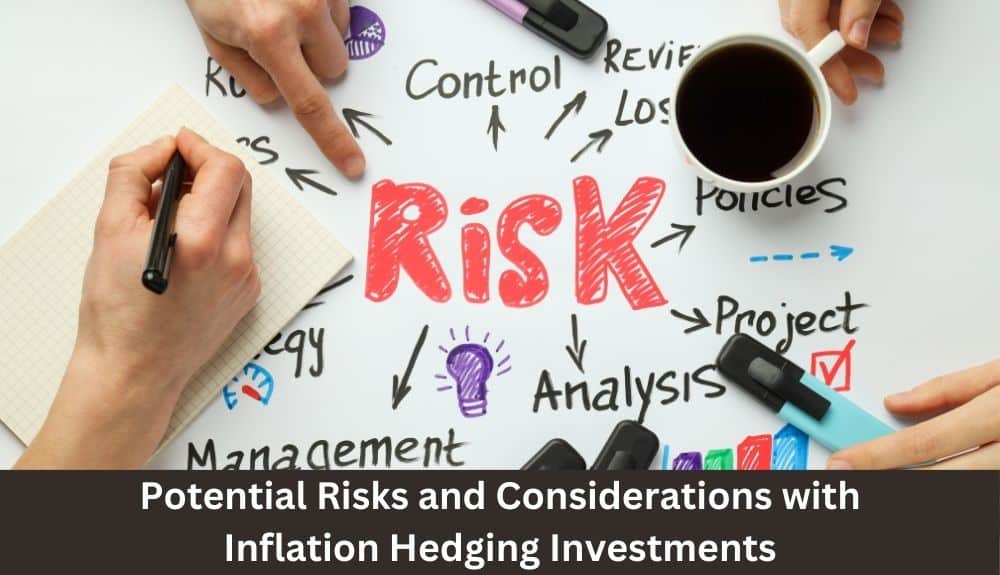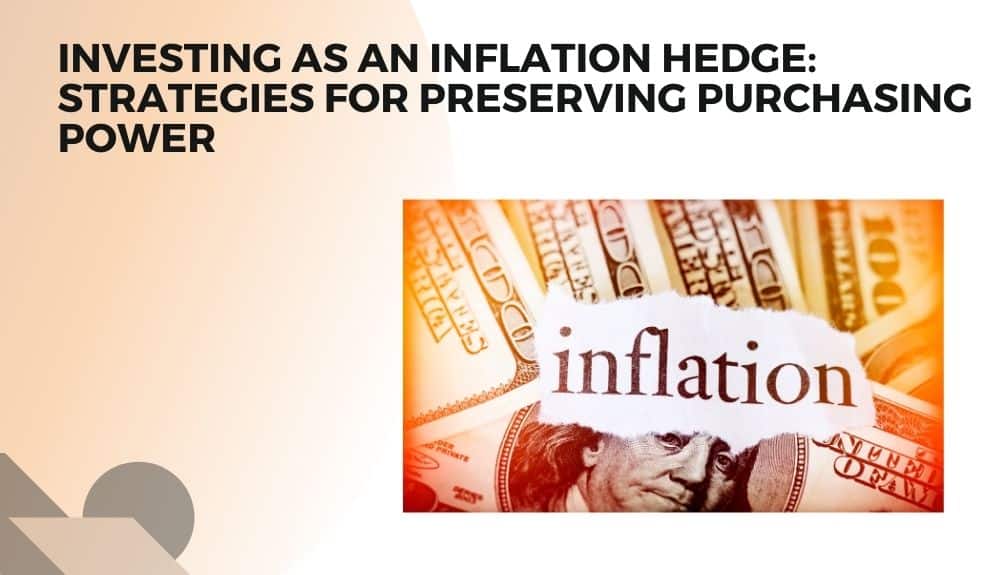In a world where the cost of living seems to constantly be on the rise, safeguarding your hard-earned money against inflation is more crucial than ever. As prices creep up, the purchasing power of your savings diminishes. So how can you combat this stealthy financial enemy? Enter: investing as an inflation hedge. This blog will unravel the mysteries of inflation, explore traditional methods and cutting-edge strategies for protecting your wealth, and guide you through incorporating smart investment choices into your portfolio to stay ahead in the game of preserving purchasing power. Let’s dive in!
Understanding Inflation and Its Impact on Investments
Ah, the elusive concept of inflation – a term that often leaves many scratching their heads. In simple terms, inflation refers to the gradual increase in prices of goods and services over time. This means that your dollar today won’t stretch as far tomorrow. As inflation erodes the value of money, it also impacts your investments.
When prices rise due to inflation, the returns on your investments may not keep pace, leading to a decrease in real purchasing power. For example, if you have $100 invested with a 2% return but inflation is at 3%, you’re essentially losing money in terms of what you can buy with those earnings.
Understanding how inflation affects investments is key to making informed decisions about where to put your money. By grasping this fundamental economic principle, you can better navigate the ever-changing financial landscape and protect your wealth from erosion over time.
Traditional Methods of Protecting Against Inflation
When it comes to protecting your investments against the eroding effects of inflation, traditional methods have been tried and tested over time. One common approach is investing in Treasury Inflation-Protected Securities (TIPS). These government bonds adjust their principal value based on changes in the Consumer Price Index, offering a reliable hedge against inflation.
Another popular method is investing in real estate. Real assets like property tend to increase in value over time, helping to preserve purchasing power amidst rising prices. Additionally, commodities such as gold and silver have long been viewed as safe havens during times of inflation due to their intrinsic value and limited supply.
Diversifying your portfolio with stocks that have strong pricing power can also be an effective way to combat inflation. Companies that can pass on increased costs to consumers through higher prices are better equipped to maintain profitability when inflation rises. By incorporating a mix of these traditional strategies into your investment plan, you can better protect your wealth from the impact of inflation over the long term.
Benefits of Using Investing as an Inflation Hedge

Investing as an inflation hedge offers several key benefits that can help protect your purchasing power over time. By strategically allocating your funds into assets that have historically outpaced inflation, you have the potential to preserve the real value of your investments. This means that even if prices rise due to inflation, the growth of your investment portfolio may offset these increases.
Furthermore, investing in assets like real estate or commodities can provide diversification to your overall investment strategy. Diversifying across different asset classes can help spread risk and reduce volatility in your portfolio. In times of high inflation, having a diversified mix of investments can be crucial for maintaining stability and potentially increasing returns.
Additionally, certain investments such as Treasury Inflation-Protected Securities (TIPS) are specifically designed to adjust for inflation by providing investors with a guaranteed rate of return above the rate of inflation. This feature makes TIPS a popular choice for those looking to safeguard their investments against rising prices.
Incorporating investing as an inflation hedge into your financial plan can offer long-term protection against the erosive effects of inflation on wealth accumulation.
Different Types of Investments for Inflation Protection
When it comes to protecting your investments against inflation, it’s essential to consider a diverse range of options. One common choice is Treasury Inflation-Protected Securities (TIPS), which adjust their principal value in response to changes in the Consumer Price Index.
Another option is investing in precious metals like gold and silver. These commodities have historically been seen as a store of value during times of economic uncertainty and can serve as a hedge against inflation.
Real estate investments can also be an effective way to protect your portfolio from the eroding effects of inflation. Property values and rental income tend to rise with inflation, making real estate a popular choice for investors looking for long-term growth potential.
Stocks from companies with strong pricing power are another avenue for combating inflation. Businesses that can pass on increased costs to consumers through higher prices may see their stock prices appreciate over time as they maintain profitability despite rising inflation rates.
Consider exploring alternative investments such as infrastructure funds or renewable energy projects, which often benefit from government support or long-term contracts that provide stable cash flows regardless of economic conditions.
Strategies for Incorporating Inflation Hedging into Your Portfolio
When it comes to incorporating inflation hedging into your investment portfolio, diversification is key. Consider allocating a portion of your assets to tangible assets like real estate or commodities that have historically shown resilience against inflationary pressures.
Another strategy is to invest in Treasury Inflation-Protected Securities (TIPS), bonds specifically designed to adjust for inflation. These can provide a reliable income stream while preserving the purchasing power of your investments over time.
Equity investments in industries that tend to perform well during inflationary periods, such as energy or consumer staples, could also be beneficial additions to your portfolio.
Additionally, having exposure to international markets and currencies can offer further protection against domestic inflation risks by spreading out your investment risk across different economies and monetary policies.
By implementing a combination of these strategies and regularly reassessing your portfolio’s performance relative to inflation trends, you can better position yourself for long-term wealth preservation in an ever-changing economic landscape.
Potential Risks and Considerations with Inflation Hedging Investments

When considering inflation hedging investments, it’s crucial to be aware of potential risks and considerations that come with these strategies. One key risk is the uncertainty surrounding future inflation rates, which can impact the effectiveness of your hedges. Additionally, certain investments like commodities or real estate can be volatile and subject to market fluctuations.
Another consideration is liquidity – some inflation-hedging assets may not be easily convertible to cash when needed. It’s important to assess whether tying up funds in such assets aligns with your financial goals and needs. Moreover, currency risk should not be overlooked; fluctuations in exchange rates can influence the value of your investments.
Diversification plays a vital role in mitigating risks associated with inflation hedging. By spreading your investments across different asset classes, you can potentially offset losses from underperforming sectors or securities. Stay informed about economic trends and consult with professionals to navigate the complexities of inflation hedging effectively.
Conclusion: The Importance of Diversification in Preserving Purchasing Power
Diversification is key when it comes to preserving your purchasing power in the face of inflation. By spreading your investments across different asset classes, you can mitigate risks and take advantage of varying market conditions.
Remember, there is no one-size-fits-all approach to hedging against inflation. It’s crucial to assess your unique financial goals, risk tolerance, and time horizon before deciding on a strategy that works best for you.
Stay informed about economic trends and regularly review your investment portfolio to ensure it aligns with your objectives. Inflation may erode the value of money over time, but with careful planning and diversification, you can safeguard your wealth and maintain purchasing power in an ever-changing financial landscape.






